exclusive comic by Buffalo’s Nathan Deganis Librera


exclusive comic by Buffalo’s Nathan Deganis Librera

Thank you for reading Issue 3—these stories have kept me inspired in our mission to break barriers through human narrative. Today is World Herb Day, celebrating the importance of planting herbs and the culture of people who do so. It is also Join Hands Day, meant to encourage community stewardship and multigenerational connectivity. Lastly, you may be wondering about butterflies. We want to recognize National Start Seeing Monarchs Day because cannabis in New York State and beyond is metamorphosing. There is immense responsibility and opportunity as an entirely new market gains respectability and capital. Loud Thoughts, like the butterfly, understands the beautiful journey of migration ahead.
@LoudThoughtsZine
©2023 Jack PorcariAll words and media property of author unless otherwise noted Layout and design by Paolo Blanchi


At our core, Our mission is to disrupt cannabis-infused storytelling through human narrative.
On April 29, viewers across three time zones remembered the impact of late Master Hashishin and cannabis educator, Frenchy Cannoli. He died in July of 2021. The documentary, Frenchy Dreams of Hashish, was screened 30 times across 5 countries. After the film, Frenchy’s wife Rebecca Hooks, who also goes by Madame Cannoli, moderated a global discussion with the producers and filmmaker Jake Remington. “The film really captured something amazing and beautiful in the spirit of who Frenchy was, but at the same time this great tragedy that’s been so-called legalization in California,” Hooks said in an interview with Loud Thoughts.
At Work’n’Roll, a cannabis coworking space in New York City, a cannabar complete with food and drink pairings were available in Frenchy’s honor. “What I really enjoy doing is giving people different experiences, especially with hash,” said John*, a cannabis tastemaker from House of Hash. “We have a few different tools to
do that,” he said.
Some of these tools included various hash pipes, Quasar-equipped hookahs, and a stylish ceramic chillum. The hash was made from sun-grown flower produced with regenerative farming practices in Humboldt County, too. One cultivar, Papaya bomb, was grown by Malama The Roots Farm: “You’re getting a lot of fruity flavors in there, but also a little bit spiciness—we decided to pair that with some milk chocolate, sea salt and also a dark chocolate with whiskey.” John said. “The tea we paired with that [strain] was a turmeric and cinnamon tea.”
The film reaches far beyond education and community: 20% of ticket sale proceeds will be donated to a nonprofit organization called the Origins Council. The group works alongside 800 legacy operators in California under the Lost Coast Farmers Guild to study, define and legitimize cannabis terroir. “Frenchy always said we had a blueprint from the Chamber of Commerce of Bordeaux in France,” Hooks said. The Origins Council has a vision to
“drive global sustainable development and regenerative agriculture through the regulated production and research of high quality craft cannabis and herbal medicine products,” according to their website. They look to create legal protections around where the plant is grown so legacy farmers can position themselves in an ever-changing market.
Beyond the hours of free educational content available online, Frenchy contributed countess published articles, a 10-step quality scoring system as well as scientific research with Lachlan Cheng, Rick Moriarity and Professor Stephen Newmaster, effectively creating the Trichome Research Initiative: “The potential for great aged cannabis resin is for me a fact and I believe that the impact aging hashish will have on tomorrow’s cannabis marketplace will be as important as aging has been for the wine industry,” Frenchy said in an Instagram post about the art of aging. “However, since my opinions are based on personal experiences, it is crucial to discover the science behind the transformation to validate my hypothesis.”
Although awareness of the process has grown substantially over the years, lack of knowledge around hash persists. In its simplest form, “Hash is deciding how to blend all the ingredients that nature gave

you,” said pharmacist and Cannanigma Chief Science Officer, Codi Peterson. Peterson, also known as “Dr. Weederson,” says the best hash is processed from outdoor cannabis because the plant creates more terpenoids as a defense mechanism against the sun. Once terroir, genetics and growing practices are solidified, “It’s deciding how small of a ball to roll, where to keep it and at what temperature—it’s not this scientific process, it’s touch and feel in the most literal sense.” As many hypotheses are tested, Frenchy inspired a new generation of hashishins to achieve excellence for themselves and others.
The Dank Duchess became royalty after expressing genuine interest in writing hash stories to Frenchy Cannoli. But it wasn’t that simple. “He informed me that
The Dank Duchess’ first smoke report in Weed World Magazine in 2015. She also contributed to Skunk Magazine, Cannabis Now Magazine and is currently compiling unpublished hash stories and videos.
urged me to attend a demo being done by Brandon of Moonshine Melts where he actually convinced Frenchy to microplane separated bags of resin; Frenchy thought it was crucial for me to understand the various approaches that hashmakers employed in order to create the best hash,” she said.
I would have to learn how to make hash in order to write about it with any authority or authenticity,” her website reads. “This is how I became The Dank Duchess, Hashmaker.”

Along with learning hashmaking came an appreciation for the culture and an understanding of the future. “As Frenchy’s first student and mentee, I had the unique opportunity to learn about hash while Frenchy himself was figuring the most effective way to teach me about it,” Duchess said.
Observation and innovation were the dominant themes of her mentorship: “He
But it wasn’t just about the best hash. It is a high Frechy described as “an overall feeling of wellbeing-ness.” At a cannabis association called La Kalada in Barcelona, Duchess was introduced to a “lowtech” cannabis pipe called the chillum by members Alessio and Jahkirevi. Since learning about the smoking device in 2016, she has collected chillum from different artists, cementing her love for people and the plant. The Dank Duchess says her “absolute favorite aspect of consuming cannabis is the knitting of social fabric between people within the chillum circle.” She can be found on Instagram “chillin with the chillum” and has even developed a ceremony meant to “infuse the participants with a sense of intimate belonging and increase knowledge of self.”
The entrepreneur, public speaker, hash consultant and board member of the Association for Cannabis Health Equity and Medicine (ACHEM) remains
committed to sharpening her skills and educating others through her four-hour interactive hash course called the Duch Touch. “He [Frenchy] supplied me with the best foundational knowledge to be able to ask important questions as I wrote many articles about hashmakers and their creations,” she said. “Now, after a few years of stepping away from making content about hashmakers, I am back at it again.”
CannaMGardensLena Burns never knew how serious her parents’ plans were to quite literally grow the family business. As a casual toker during her youth, she couldn’t imagine a future that included 12+ years of cultivating cannabis and almost a decade of hashmaking. “Apparently my stepfather had been doing it since the 70s,” Burns said. “In 2010, they wanted to expand and open up a delivery service so my relationship was reignited and I connected with this plant on a whole new level.”
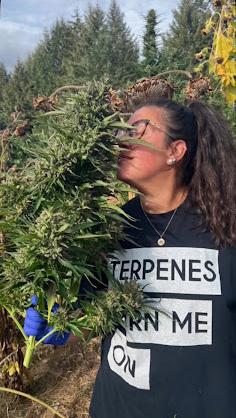
The inspiration came about as more customers began asking for hash. As a “flower-smoker” and newcomer to the space, she had no idea what hash truly was. Soon enough, her stepfather pulled out some bubble bags in the backyard and after learning about ice water hash, a passion was born. Burns booked a flight to San Francisco soon after to learn directly from Frenchy Cannoli.
“From the moment I met this man, he was just so passionate and vibrant and full of life,” Burns said. “I mean he could have been teaching anything and whatever it was, I was sold—like I wanted to know more about it, to be the most educated on it and it just so happened to be [about] hash.”
As a mentor of Frenchy, Burns gained insights on the production and history of artisanal hash as well as a desire to curate
flavorful and unique genetics. She explains how the future and fun of hash lives in the farming: “You may totally understand a particular cultivar by the end of the season one year, but the next year it is so different because the climate is different, the water may be different, the microbes could be different,” she said. “It’s wild how it’s everchanging, so [that] just keeps it exciting.” The Old Man of the Mountain
Charles Stockstill is on a mission to change perceptions of hashishins across the globe. After experiencing a stigma throughout his life and understanding the rewards of
hard work, he says hash changed his life for the better. “Anytime that you’re starting to really pay attention to quality, whether it be hashish, cigars, coffee or your personal craft like building homes and fixing computers, there’s a certain art that you’re going to bring to the game,” he said. “Once you start paying attention to that level of quality somewhere in your life, it’s going to bleed over into every aspect of your life and for me, that was very apparent when I became a [certified] Ganjier.”
The self-prescribed “boy from the country” started hashmaking after a lifetime fascination with cannabis. In 2006, before mainstream consumers in the US

paid much attention to it, he read books, magazines and even translated Frenchy’s DIY videos to English with the help of a friend. Copious amounts of hashish were created through trial and error and Stockstill learned that the job requires attention to detail, phone calls in the middle of the night and lots of mold. As a mentee, he says there was “no room for error,” in the best way possible: “It just made you want to do the best you could.”
After “working the art form” for five years, Stockstill decided to step away from cannabis altogether. Eight years later, he achieved his dream of making hash fulltime. “I’m trying to be at the forefront of the 200 or so of us that are certified and show what we can do to make a living, how we can affect the community in a positive light and really tie different communities together,” Stockstill said. “Not just you know, the hippies from the hill, but also the suits from DC—we all need to sit down and talk to make this work.
One way he has done this is through the creation of his brand, the Old Man of the Mountain. Stockstill still recalls history lessons from Frenchy about the legendary figure Hasan Sabbah. “That [Old Man of the Mountain] was a derogatory term ,” he said. “So I’m trying to flip it around and use it against our enemies to promote this world of hashish, health, culture and medicine…let’s go back to the original culture of hashishins and let’s decide what that [means] in the 21st century.”
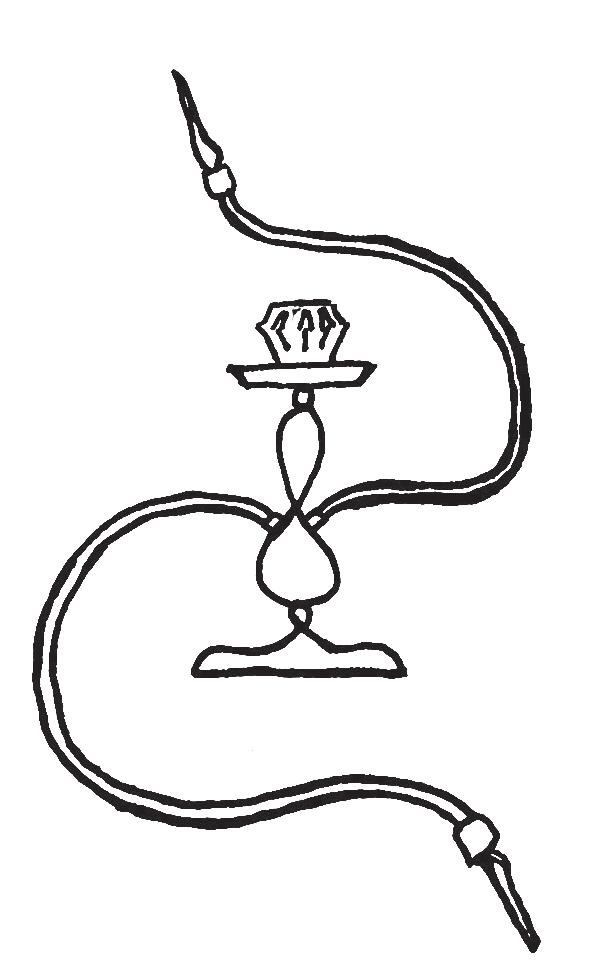
o be honest, finding the words for this piece has been difficult. I struggle sometimes to step outside my lived experience and hear the story in front of me. I also realize masculinity, which is not bad in principle, has crept into nearly all corners of my life, including cannabis culture. Now before we start dividing into our separate camps, let us realize one fact: the phrase “women in cannabis” is so overused. To be clear, this really isn’t a piece about gender or being politically correct. This isn’t shaming others or tallying the true amount of female weed CEOs.
This is about recognizing the diversity of thought around us. I’m glad more people are talking about her(b) perspective because this is important stuff! I also applaud lawmakers for making equity a priority as everybody deserves the chance to enter the cannabis space with dignity. But somehow,
with help from the government, mentorship programs, stakeholder meetings, incubators and investment resources, women are still struggling to feel heard and gain the market share they deserve.
The stories or “verses” I’m about to share with you constitute a prayer to men in the cannabis community. You’ll hear different perspectives meant to inspire bridgebuilding. In my 23 years of life, I’ve certainly caught myself interrupting women, a habit so ingrained into today’s norms that some struggle to notice. I’ve also understood the desire to trust men and stay comfortable in my masculine spaces. But crucially, I can feel the power of all voices. Why does this even matter? Because breaking barriers is pretty easy when you’re honest with yourself and others. Inside and outside cannabis, there is a need for connection.
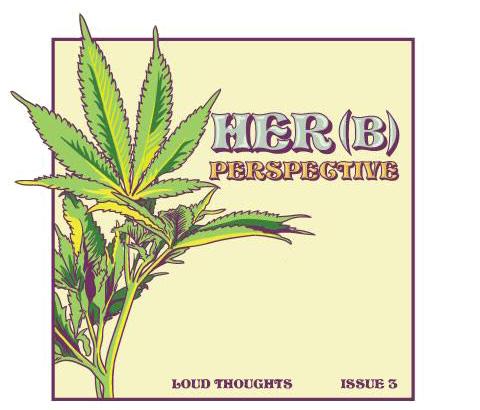
Venus Rodriguez says the scent of cannabis brings her back to her childhood in Puerto Rico. The smell was “always around,” and her parents even smoked with educators from her Montessori elementary school. “On the weekends we would hang out with them and the principal would be smoking with my parents,” she said. “So you can imagine that as a child, I really didn’t think there was anything wrong with it.”
Underneath it all was an understanding that this world must stay in the closet, along with the plants. In 2003, after some time in the legacy market, the unfortunate passing of her partner led Rodriguez to her calling: helping women and educating others. She dove into spirituality, gathering wisdom from indigenous elders in Puerto Rico and a teacher from Peru. As an ordained minister she began leading healing ceremonies, some of which included a particularly green sacrament. As a member of a farm community, Rodriguez met many teachers who did healing work, meditation groups and ceremonies, too. Most importantly, she took inspiration from her mother—a compassionate “protector” who studied yoga, used the plant mindfully and was the Deputy Director of the Crime Victims Unit in the South Bronx. “The whole healing part, after what we experienced with my ex’s murder, was really important,” she said. “[My mother] used to tell me, this is my medicine—and it
The self-proclaimed “cannadoula” also assisted homebirth midwives in New York for 20+ years and works to “normalize birth” through sharing pictures of placentas on her Instagram page. One post reads: “I know that afterbirth is seen by most people as trash, waste or gross…we all had and needed a placenta, they should be honored!” Rodriguez’ unique photos of life’s earliest phases were put on display at an art installation called Rites of Passage: 20/20 Vision.
In New York State, Rodriguez is giving birth to something new: a legal cannabis brand to encapsulate the story. Her son, who had multiple arrests for cannabis, qualified as a CAURD applicant and looks forward to entering the legal marketplace. Their logo features a nurturing maternal figure named Atabey. The brand, Sana Cannabis, comes from a Spanish word that is present in medicine songs and ceremonies. “They chant that word a lot [Sana] and it just seemed so right and natural because cannabis helped me heal,” she said. “The mother is helping rebirth cannabis; the energy of what we call Pachamama or Mother Earth, is like this new energy, the new spirituality…indigenous wisdoms are finally beginning to be respected.”
After creating a brand Rodriguez has felt inspired to help others succeed in the cannabis industry. Two weeks ago, she was appointed as head of the Women’s Division
for the New York CAURD Coalition, a nonprofit organization dedicated to “creating a sustainable, equitable, and inclusive cannabis industry.” Since its recent inception, they have focused on helping justice-involved individuals throughout the supply chain blossom. Household names in the industry, like cannabis e-commerce platform Dutchie, have sponsored the organization and led workshops for members. Beyond this, there is more opportunity to grow, as they recently decided to offer services to ancillary businesses, like paraphernalia and apparel companies. “We feel it, you know, like there’s a power in being together,” Rodriguez said. “Cannabis is a feminine plant and she’s been treated in a very, very masculine model.”
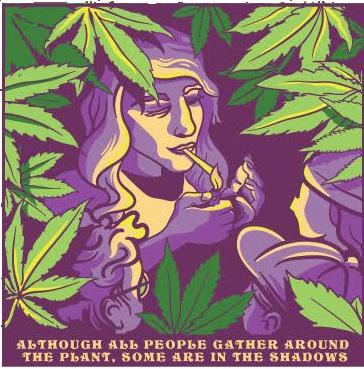
quite popular in the region. She described it as “regular” genetics, before strains gained popularity. “I got into the legacy market when I was 15, that’s when I started smoking,” Gladys says. “My family’s been into drug dealing…my uncles, my cousins and all them sold…so, I guess I’ve always been in the legacy market in a sense.”
Life as a female plug is constantly changing; there is PTSD from the past, anxiety for the future and a faith in the present moment. “My partner was like my ‘partner in crime,’ so we sold weed together and I was in a sense respected,” she explained. “But when he passed away, it was just me and I was looked at as someone that held responsibility over the market—so I shut it down.”
Gladys is a legacy market dealer who has asked to remain anonymous. Before Gladys’ family emigrated to America, her grandfather grew what is known in Puerto Rico as “kreepy.” As the name suggests, this cultivar tends to creep up on you and was
Modern-day luxuries like buying packaged weed out of an Uber or placing a delivery order from your bedroom creates what Gladys and many others deem the “gray market.” In her mind, being a woman in the space wasn’t the issue. It was her entanglements with the so-called “black market” that negatively impacted perceptions of her. In addition to judgment from potential business partners, she explains it “wasn’t feminine” to be smoking with men. “The girls that were smoking with the boys looked more slutty…they were the hoes and stuff,” she said. “They just wanted to smoke weed and get high!”
Getting high on change helps Gladys see a different future ahead of her. A future
where she can continue the legacy of her grandfather in a meaningful, safe and legal space. “A lot of these people who have money out here are taking advantage of black and brown communities,” Gladys said. “I think it’s just important to remember that these plants thrived in these communities and we’ve been through hell… And I think it’s important that we bring it back home.”
immediately” for her and soon enough, she was splitting her harvest with friends and contacting brokers in cities across the country. “I had a natural knack for it and the plant in and of itself was super healing,” Nedroscik said. “There’s a lot of us that were involved with crazier things that feel like cannabis had a really positive impact and maybe even in some ways, saved our lives because it was an outlet.”
This outlet inspired personal growth and through it, she met her future husband. Navigating the volatile illicit cannabis market also comes with challenges. “You get in trouble with the state or get robbed; it’s one thing, but when the Feds come after you—that’s not something you walk away from,” Nedroscik said. “When you’re in that community, you’re putting your friends at risk by staying in that community.”
The canna-closet is what saved Heather Nedroscik. “There was a moment where I was like, ‘listen, I would not feel bad going to jail over cannabis,’ like I’m cool with that,” she said. “I believe strongly enough in this plant and the positive nature of it.”

She had experiences with other drugs and says growing weed saved herself and countless others from going down a dark path in life. At 23, the hobbyist cultivator got an opportunity to grow cannabis at a facility in Detroit. She uprooted her life and moved to the “safe haven” before a police presence became prominent. It “clicked
Staying aware of community became even harder as her career in the legacy market developed. “Even now sometimes when I talk to men I don’t necessarily know in the cannabis space, it’s automatically assumed that they know more than me,” she said. “If anything, growing cannabis teaches you that the more you do it, the less you know about it.”
With legalization, the cultural mores of cannabis culture have evolved and Nedroscik sees women as a source of inspiration and passion. “I tend to find that women in legal or gray area cannabis are more authentic; I see a lot of men…they
still are kind of doing it for the hype,” she said. “But listen, there’s a lot of great men in cannabis that are amazing people that care about the plant but I have not seen a woman yet that is new to cannabis that isn’t extremely authentic.”
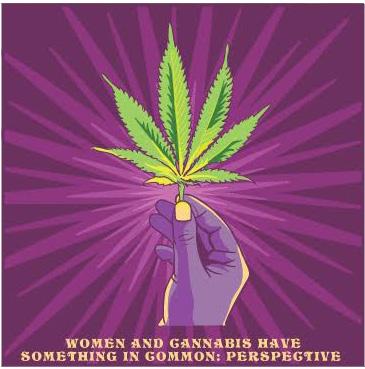
Public policy is currently catching up to the harms caused by the War on Drugs and Nedroscik is hopeful our institutions can find a solution. “I do think there’s some really good people on the [New York] state level and that are involved with the social justice aspect of it, they truly want what’s best for the communities,” she said. “I think that they can work to involve legacy operators more because there’s a little bit of a lack of inclusion, of people who, you know, lived that life.”
possess as people. If we understand it, we can channel it into tools and sculpt a beautiful future—together!

I hope these stories helped you break barriers in a big or small way. It is important to emphasize the human aspect of cannabis, as this will help us to “fall forward” and be available for our communities. Bias is ultimately the most expansive limiter we
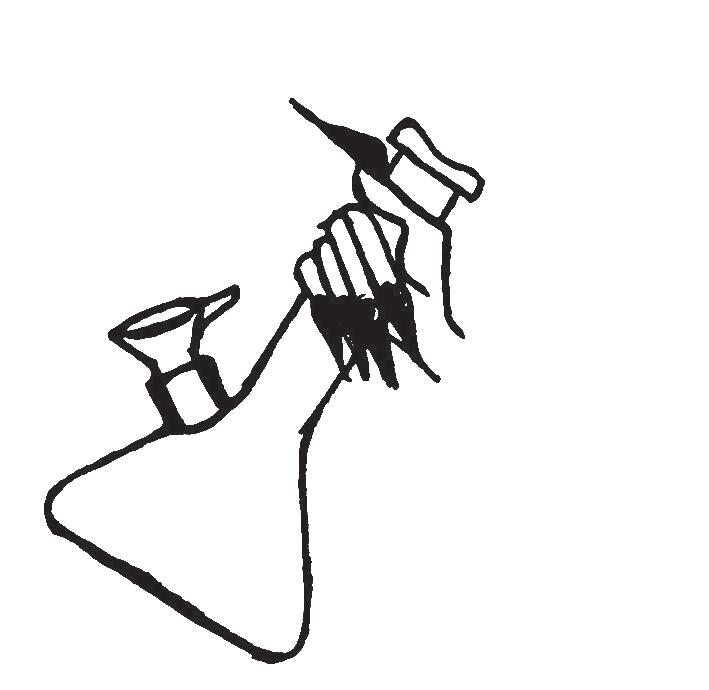
ike cannabis, football is multifaceted — there are traditional and nontraditional routes to achieve success. This theme is central to NFL legend Stevie Johnson’s journey as an athlete, entrepreneur and human being. While his company and life motto is HandleBizHaveFun(HBHF), balancing authenticity and personal excellence can be hard in practice.

Throughout his professional career, Johnson scored over 30 touchdowns and made a name for being electric in-person and online. This ultimately cemented the motto, and soon, the lifestyle.
“The WhySoSerious lifestyle is complicated honestly—it’s so simple, it’s complex,” Johnson told Loud Thoughts. “The true origin was me telling myself to stay calm because I take everything seriously. It was just organic that Batman and Robin played on the same team that year.”
A new mindset opened a world of possibility, collaboration and eventually, a nonprofit organization. Through asking himself why he was so serious, Johnson saw an opportunity to work towards a mission of his own: to develop and support student-athletes and entrepreneurs on and off the field with Exposure Academy.
Mentorships are held across the country where participants can find avenues for professional opportunities and learn how to manage housework, nutrition and finance. Music artists like RTF, Rich Rocka and Genecist were able to tune into their creative frequencies at their symposiums, too.
“Handling business isn’t always easy, and that’s something that we speak on confidently, so when we or our pupils encounter a tough situation, they’ll be somewhat prepared for it,” Johnson said.
As a child, the plant wasn’t stigmatized. “It was a barter to make money is what I
courtesy of ImagineWe Publishers

was taught,” Johnson said. He took advice from the “older guys” in his circle and focused on football. Now a youth leader, he says some kids have come through Exposure Academy using cannabis before they understood why. In professional circles, the stigma associated with the plant inspired Johnaon to have a laser-focus on success, discipline and helping others. “I’ve overindulged a lot,” Johnson admits. “Do it however you want, but you have to manage it…I’m just kind of speaking from what I’ve seen walking through the locker room and walking through those doors.”
These very doors opened up many opportunities to tell his story. One way
he is doing this is with the release of his second children’s book, Freddy J Makes His Play. On May 21st, it will be released alongside the companion coloring book, Visions (Volume II). The goal is to “bring exposure to athletes and entrepreneurs and the perseverance they showed to become able, in children’s form,” he said.
On 4/20, Johnson told the story of how cannabis helped him become able with his new brand, Trailblazer. After fracturing his back, cracking his ribs and injuring his knee, the reality of the medication he was taking to sustain a career in the NFL began to kick in. The pressure and anxiety to perform was immense and natural remedies like running, hot and cold tubs, diet and sleep only did so much, he said. “Real life actually hits and I was getting injured,” Johnson said. “So it’s like what do I do to be able to maintain this and it was taking a pill so I can get right back out there no matter what.”

Eventually, he stopped taking medication, microdosed cannabis in the NFL and connected with a partner in Buffalo who educated him on the science behind it. Three main strains gave him “that edge” to get out of bed each day. Now, he looks to share his favorite medicinal genetics with others.
At a Canna Q&A on April 22nd, Johnson elaborated about his place in the world of weed. The event was hosted by Green Philosophy 716, a state-licensed hemp retailer in Buffalo. “It’s interesting to have a retired NFL player actually come here and not feel scared and talk about those things,” says owner Dr. Jackie Schnieder. “My family used to be pretty anti-cannabis for years, so to actually watch them take in what was being said and not, you know, get up and leave was pretty powerful.”

I dedicated Loud Thoughts “Zine” to the interested skeptic, weed lovers and patients like myself. We are courageous in sparking loud conversations about relevant topics within the world of cannabis. Articles in Loud Thoughts are not designed to be an allencompassing “cann-ual.” Instead, we aim to inform and plant seeds of curiosity during a historic era of cannabis reform. As global prohibition ends, we will break barriers through human narrative and document an untold history of modern-day cannabis.

 -Lief
-Lief


